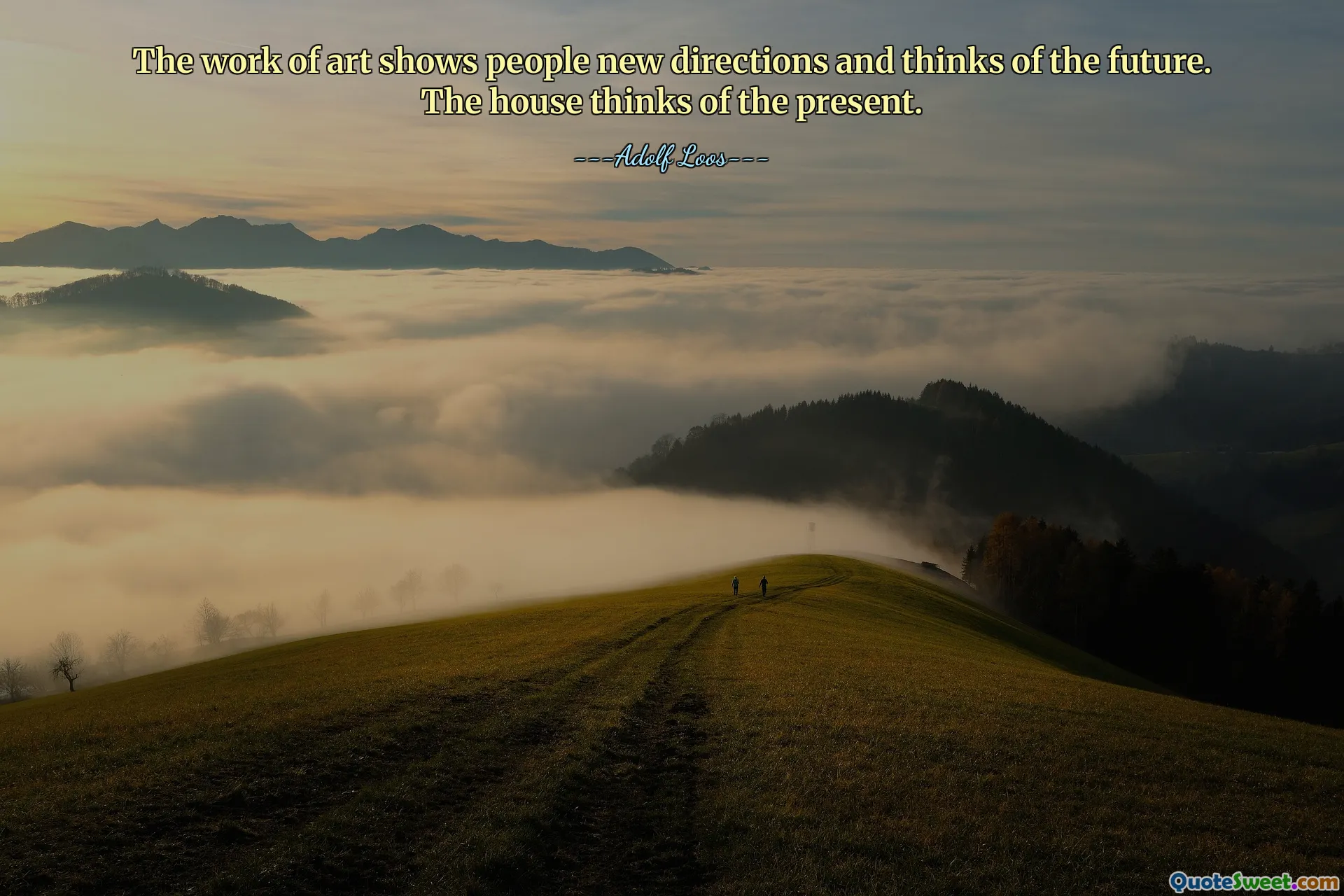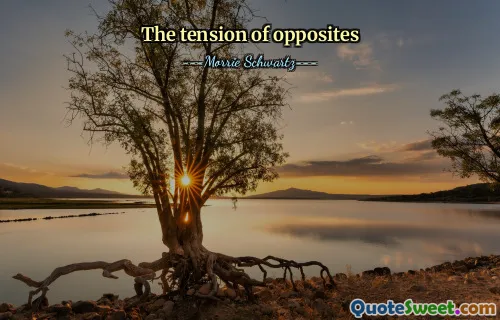
The work of art shows people new directions and thinks of the future. The house thinks of the present.
This quote by Adolf Loos highlights the contrasting yet interconnected roles of art and architecture in shaping human experience. Art, in its essence, serves as a visionary force, inspiring society to look beyond the immediate and explore possibilities that lie ahead. It acts as a catalyst for change, pushing boundaries, and encouraging innovation. Art challenges conventional perspectives, offering new directions that can influence cultural, social, and technological progress. In this sense, art is not merely decorative but instrumental in envisioning and cultivating the future.
On the other hand, the house, or architecture, is rooted in the present moment. It functions in the tangible world, addressing current needs, resources, and societal conditions. Architecture must respond to practical considerations—climate, materials, lifestyle—while also embodying the cultural identity of its time. The house's concern with the present ensures that these structures are relevant and functional, providing stability and comfort to its inhabitants.
The dynamic between these two—that art looks forward, and architecture adheres to the present—embodies the balance necessary for cultural progression. Artistic innovation urges society to imagine new realities, while architecture grounds these visions into practical forms. Effective integration of both perspectives fosters a thriving environment where creativity and functionality coexist. This interplay ultimately enriches our collective experience, shaping a future that is both inspired and sustainable.
Loos's statement underscores the importance of recognizing the different yet complementary roles that creative disciplines play in human evolution. While one nurtures aspiration and possibility, the other ensures stability and relevance, creating a harmonious progression of civilization.







